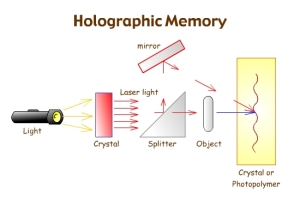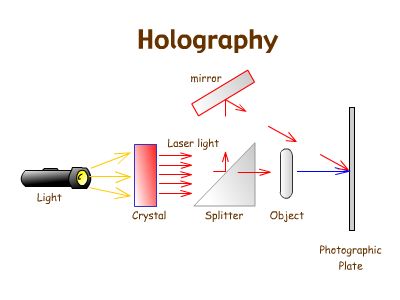We are getting close to our universal structure, the thing that holds it all together. From atoms to giant stars, everything produces an electromagnetic field. It is the electromagnetic field that holds atoms together, gives matter its solidity and light its direction. Electromagnetic energy is a fundamental force. We can be certain that the structure that holds the Universe together involves electromagnetic energy and its associated fields of force. We are immersed in uncounted nested and overlapping electromagnetic fields that exhibit varying degrees of synchronization, or coherence. I’m calling this interlocking field of fields, the Holoverse. It is the informational component of reality. It is the spiritual world, the separate reality, the ethereal version of physical reality. It doesn’t mean that the Universe is imaginary, but that the Universe has an imagination.
Although it can be broken down into some smaller parts, from a holographic systems standpoint, we will consider the atom is the basic unit of matter. The atom is a bundle of energy that creates a weak electromagnetic field around itself. This field has a frequency, a signature signal, that it broadcasts incessantly. It may be the sound of electrons racing around a nucleus at breakneck speed, or vibrating at a comparable frequency or pattern of frequencies, but the signal is the buzz created by its internal dynamic. Every other atom of the same material is broadcasting the same identical signal. When those signals are in perfect synchronization with each other, they form what is known as a coherent electromagnetic field.
A coherent electromagnetic field creates a situation where time and space are irrelevant. That doesn’t mean that time and space don’t exist, they are ignored inside the field. Time and space are still fully functional outside the field. Without time and space, there would be no matter to generate the coherent electromagnetic field, in the first place. Without the field, there would be no place to store the information necessary for matter to exist. The coherent electromagnetic field is the informational component of matter. As information, not stored exactly, but present in an active memory, where time and space are irrelevant; a situation that sounds very much like consciousness.
Coherent is a good description of this kind of a synchronized electromagnetic field, as this appears to be fundamental to the process of awareness.
Holographic Model
What this holographic model indicates is that every unit has a context within this system. All objects have a place, a position, an address within the coherent electromagnetic field. When the Universe moves, it does so while maintaining relationships between fields. The fields all record all changes in their relationship with other fields, plus the holographic information available from their membership in larger coherent electromagnetic fields. Within the Whole, each separate field records its local contribution to the Holoverse. This forms an ongoing memory of the changing dynamic structure.
Since all of this movement, from galaxies down to atoms, occurs in repeating cycles, this dynamic memory is recording reoccurring interference patterns that represent the full range of activity for each holographic unit. The history thus stored contains all of the information necessary to project the dynamic into the future. The Universe contains the entire memory of how it got to the present and how the System intends to complete each and every cycle in the future.
The key to the whole thing is to realize that ALL IS MEMORY!
The Holoverse is an electromagnetic mirror image of the matter currently making up the Universe. It is a dynamic hologram generated by atomic frequencies. Matter is the memory of past Holoverse, like a print out of progress, but it continues to update forever.
The Holoverse is like a real time index of all matter in the Universe. All matter has this informational aspect that works like a relational database, connecting all bits of matter to all other bits of matter. Unlike a database, which must follow a path to the information, in holographic memory there is no distance between memories, the information is everywhere at once. In theory then, a point of awareness, functioning within the Holoverse, could traverse the information of the entire universe without moving.
Time/space is only relevant to matter. In the Holoverse, like our own imagination, time and space are only guideposts relating to reality and not constraints on movement. Since past and future are projections, without a material presence, neither the past nor future is directly accessible from the present. Past and future are only accessible through an awareness of memory by some sort of consciousness.

